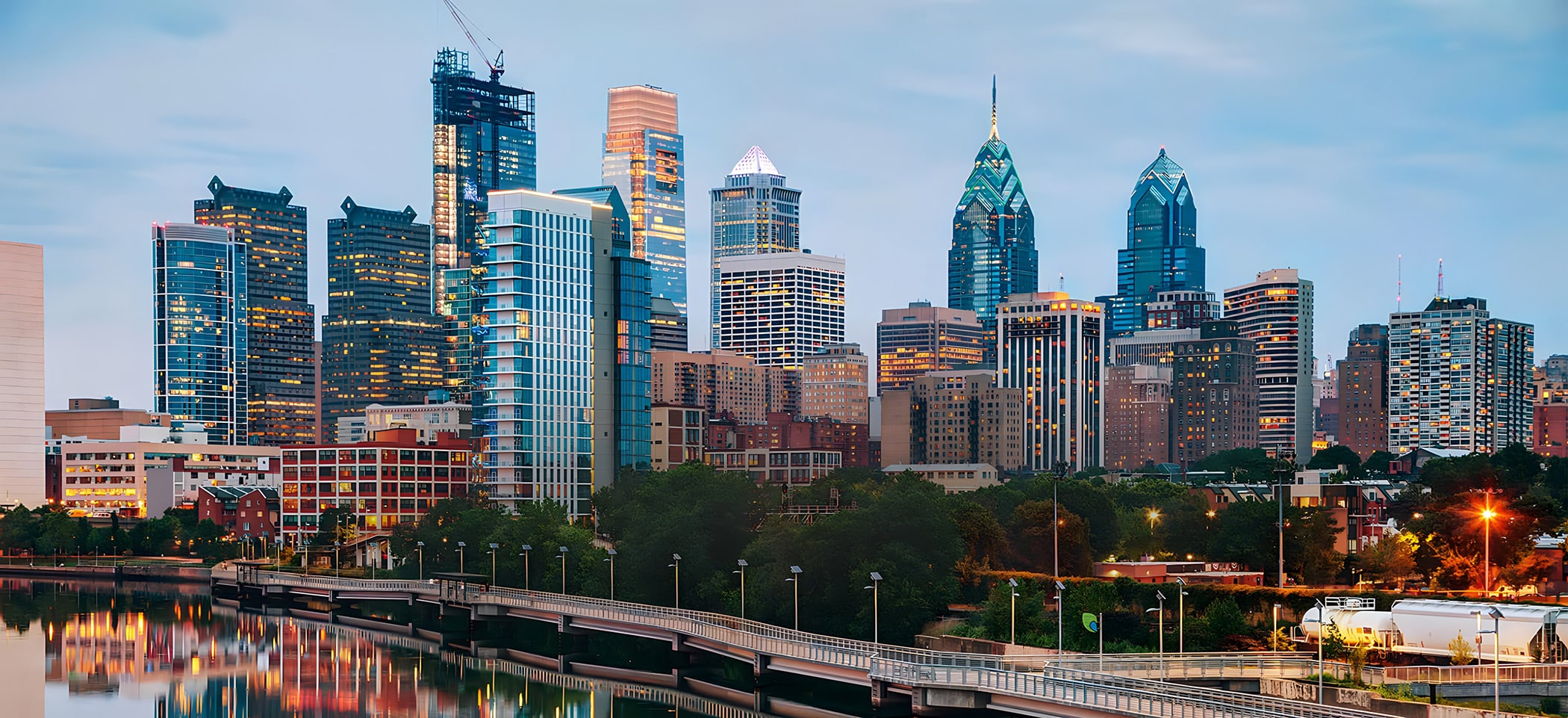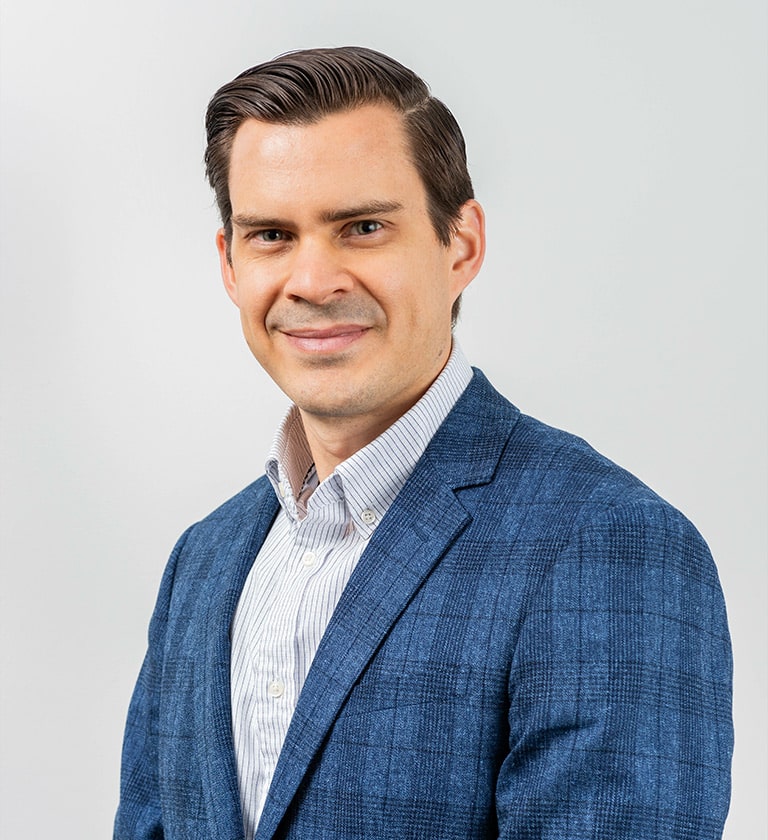
Rhinoplasty in Philadelphia, PA
Embrace the transformative power of rhinoplasty. This surgical procedure not only reshapes your nose to enhance your aesthetic appeal but also improves its function so that every breath is effortless and each glance in the mirror satisfying.
Breathe Easy and Boost Your Confidence with Rhinoplasty Benefits
Before and After Rhinoplasty Photos
* All patients are unique and individual results may vary.
Why Choose Rhinoplasty?
Some of our patients have been unhappy with their facial appearance or their nose for years, while others may have suffered nasal trauma in the past. Perhaps you have had a prior rhinoplasty and are not completely satisfied with the results, or you require a rhinoplasty for a deviated septum.
In some cases, additional surgery may be necessary to address these concerns, and rhinoplasty is a fantastic option for such problems. Although we do offer non-surgical options, nothing equals the changes that can be achieved with nasal surgery. For example, studies have shown that changes in nasal appearance can significantly boost patients’ self-confidence. Rhinoplasty, particularly when performed by a rhinoplasty specialist, can be a life-changing choice for the right candidates!

What is Rhinoplasty?
Rhinoplasty (or a “nose job”) is surgery for people who are dissatisfied with the appearance of their nose. As a board-certified plastic surgeon, Dr. Lozada has the skills and experience necessary to achieve optimal results. The nose, a central structure that sits between the upper and lower parts of the face, should create facial harmony and not draw attention away from your other attractive features. Rhinoplasty, as a common facial plastic surgery procedure, can enhance both the aesthetics and function of your nose.
A nose that is not balanced with the face pulls attention away from the person’s other attractive features. Rhinoplasty can improve both the form and function of the nose. Common reasons for rhinoplasty include:
- Removing a bump
- Refining a bulbous tip
- Changing the size of the nose
- Improving breathing
- Straightening a crooked nose
- Narrowing wide nostrils
Is Rhinoplasty a Suitable Option for Me?
Good candidates for a rhinoplasty are healthy, non-smokers who have specific concerns about their appearance or breathing. Common goals include reducing a bump, refining the tip, narrowing the nose, and changing the size of the overall nose.
Those with realistic surgical goals are ideal for this procedure. If you have had previous rhinoplasty and are dissatisfied with the results, then you may also be a good candidate for revision surgery.
The Cost Of Rhinoplasty In Philadelphia
The total cost of rhinoplasty includes various components such as anesthesia fees, surgical facility charges, surgeon fees, location of the office, and the complexity of each individual case. These factors can significantly impact the final price you can expect to pay for your rhinoplasty surgery.
In Philadelphia, PA, the cost of rhinoplasty typically ranges from $4,000 to $18,000. However, it is important to note that this range may vary depending on several factors unique to your case.
It is essential to prioritize quality and safety over price when it comes to rhinoplasty surgery. Remember that this is a complex procedure that requires expertise and precision; therefore, choosing an experienced surgeon should be your top priority.
Are Rhinoplasties Covered By Insurance?
Rhinoplasty procedures are typically not covered by insurance because they are considered cosmetic procedures. Cosmetic procedures are generally optional and performed to enhance appearance rather than address medical conditions or health-related issues.
However, in some cases, insurance may cover a portion of the rhinoplasty procedure if there are specific health-related issues that need to be addressed. For example, if a patient has difficulty breathing due to a deviated septum or other structural abnormalities, insurance may cover the functional aspect of the surgery, such as septoplasty.
It is important to consult with your insurance provider and plastic surgeon to determine coverage options and any potential out-of-pocket expenses associated with rhinoplasty.
TESTIMONIALS
The Rhinoplasty Consultation
Your rhinoplasty consultation will begin with a discussion about your goals for surgery. Dr. Lozada will take the time to understand your concerns and will then examine your nose and discuss his findings with you. Follow-up appointments will be scheduled to monitor your healing process and answer any questions you may have.
Next, state-of-the-art 3D photographs will be taken of your nose with the Vectra imaging system. These will be analyzed with advanced real-time morphing software during your consultation to show you the results of the proposed changes.
Moreover, Dr. Lozada will show you before and after photographs of previous patients to illustrate the actual results of surgery. He has extensive training in multiple rhinoplasty techniques and specializes in both endonasal “scarless” as well as open rhinoplasty, allowing him to tailor his approach for each person. Finally, Dr. Lozada will develop a personalized surgical plan for you. Questions are encouraged throughout the entire consultation process, as Dr. Lozada loves engaged patients!

Before and After Rhinoplasty Photos
* All patients are unique and individual results may vary.
Preparing for Rhinoplasty Surgery
Prior to your surgery, you will come to the office for a pre-op visit with Dr. Lozada. He will review your personalized surgical plan and answer all your questions. You will also be given detailed pre-op and post-op instructions, including care and activity restrictions.

Need more information?
Call us or email us to make an appointment
The Rhinoplasty Procedure
Rhinoplasty is typically performed while the patient is under general anesthesia and oftentimes is conducted as an outpatient procedure. Lozada has extensive training in multiple different rhinoplasty techniques and tailors his approach to each patient’s case. He specializes in both endonasal “scarless” as well as open rhinoplasty.
The bone can be shaped with special tools and the cartilage may be removed, re-shaped, or augmented. Specific cases may require additional cartilage from either the septum or ear.
What is Scarless Rhinoplasty?
Scarless rhinoplasty changes the appearance and function of the nose with incisions placed entirely within the nose that leave no external scar. During the procedure, the cartilage and bony structures of the nose are accessed via specialized incisions. At the conclusion of the procedure, a splint is placed on the nose and left in place for approximately 4 or 5 days. Dr. Lozada does not routinely place packing inside the nose after scarless rhinoplasty surgery.
Recovering from Rhinoplasty Surgery
The recovery time from rhinoplasty is highly variable and depends on the type of procedure performed. The healing time for Rhinoplasty also differs. For example, recovering from bulbous nose rhinoplasty may take longer than from other types of rhinoplasty. Swelling and bruising are expected, although these will mainly subside within 2 weeks. You may experience some discomfort after the procedure, but strong pain medication is not usually required.
Nasal saline sprays are encouraged to keep the nasal passages open. Any bruising around the eyes is easily concealed with makeup during the first week after surgery. Your cast and sutures will be removed around 4 or 5 days after surgery. You should take it easy for the first week and can return to work in the second week.
You should not perform any exercises or heavy lifting for 2 weeks after surgery. Most of the swelling will have gone by 2–3 weeks, and it will gradually continue to subside for weeks after. Your nose will continue to heal for months after your rhinoplasty procedure, so the final results will not be visible until a year later. Visible scarring is typically minimal, and any visible scars that do remain are often subtle and fade over time.

Why should you choose Dr. Lozada for your rhinoplasty?
Dr. Lozada is a rhinoplasty specialist with Penn Medicine and is fellowship trained in Facial Plastic Surgery from the University of Pennsylvania.
He trained in NYC with some of the most acclaimed facial plastic surgeons in the country and underwent intensive rhinoplasty training at Penn. Dr. Lozada has had extensive training and experience in cosmetic rhinoplasty. Moreover, he is one of the few surgeons in the Greater Philadelphia area with expertise in scarless rhinoplasty surgery.











